Below we’ll take a look at some stunning tropical plants that thrive in greenhouse environments, along with tips for their care and cultivation.
Abutilon (Flowering Maple)

Abutilon, commonly known as flowering maple, features beautiful bell-shaped flowers that come in a variety of colors, including red, yellow, and orange. This versatile plant is a favorite in greenhouses due to its ability to bloom year-round under optimal conditions. Abutilon thrives in bright, indirect light and prefers well-drained, rich soil. Regular watering and feeding will encourage continuous flowering, making it a joyful addition to your greenhouse.
Acalypha

Acalypha, often referred to as copperleaf or chenille plant, is known for its remarkable foliage, which exhibits striking colors ranging from deep greens to fiery reds and yellows. With its bushy growth habit, Acalypha can add drama to any space. This plant flourishes in a humid, warm environment and requires consistent moisture to maintain its vibrant leaves. Pruning is essential to encourage bushy growth and prevent leggy behavior.
Lipstick Plant (Aeschynanthus)

The lipstick plant, scientifically known as Aeschynanthus, gets its name from its tubular flowers that resemble tubes of lipstick. These tropical epiphytes prefer lower light conditions, making them perfect for shaded areas in your greenhouse. Ideal humidity levels and regular misting will enhance their growth, and the trailing stems allow for stunning hanging displays. Position them in a hanging basket for a dramatic effect.
African Lily (Agapanthus)

Agapanthus, often called the African lily, is a stunning plant with striking clusters of blue or white flowers. This perennial thrives in warmer temperatures and requires well-drained soil. In the greenhouse, African lilies can bloom during the summer months, providing a beautiful display. They prefer full sun or partial shade and should be kept adequately watered, particularly during the flowering season.
Agapetes
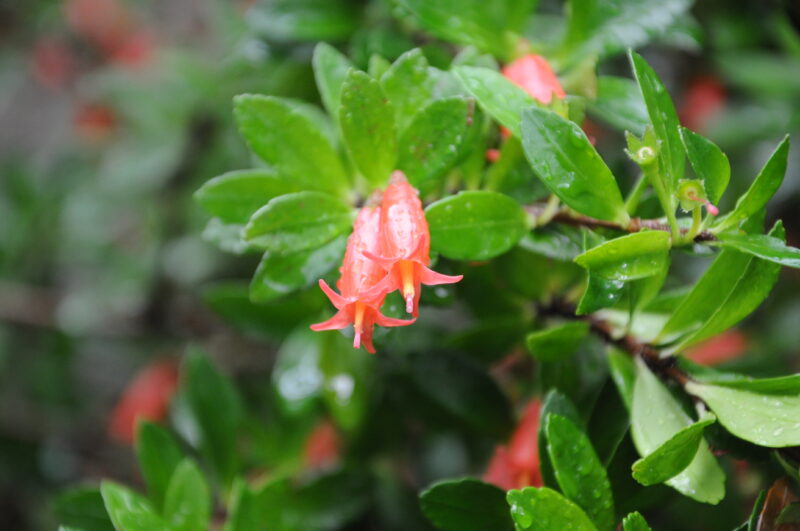
Agapetes is a lesser-known plant that produces delightfully tubular flowers in hues of red, pink, or orange. This evergreen shrub thrives in cooler conditions typical of high-altitude environments, making it an excellent choice for gardeners seeking a unique species. Agapetes prefers acidic soil and partial shade, so ensure you mimic its natural habitat for successful growth.
Golden Trumpet (Allamanda)

The Allamanda, or golden trumpet, is renowned for its large, trumpet-shaped flowers that blossom in vibrant yellow tones. This vigorous vine can create stunning displays in a greenhouse. It thrives in bright sunlight and requires well-drained, nutrient-rich soil. Regular pruning supports bushier growth and encourages abundant flowering. It’s also worth noting that Allamanda can attract pollinators, which is an added bonus for greenhouse biodiversity.
Alyogyne

Alyogyne, also known as blue hibiscus, features delicate, hibiscus-like blooms ranging from purple to deep blue. This plant is particularly well-suited for greenhouses due to its tolerance for heat and drought. Alyogyne prefers direct sunlight to thrive, and moderate watering will help maintain its health during dry periods. Incorporating this plant adds a unique color palette to your tropical greenhouse.
Kangaroo Paw (Anigozanthos)

The kangaroo paw, native to Australia, features unique, fuzzy flowers shaped like paw prints that can be a conversation starter in any greenhouse. Its vibrant red and green blossoms add a tropical feel. Kangaroo paws prefer full sun and well-drained, sandy soil. Interestingly, they are drought-tolerant once established, requiring minimal watering. Regular deadheading helps encourage continuous blooming.
Anthurium
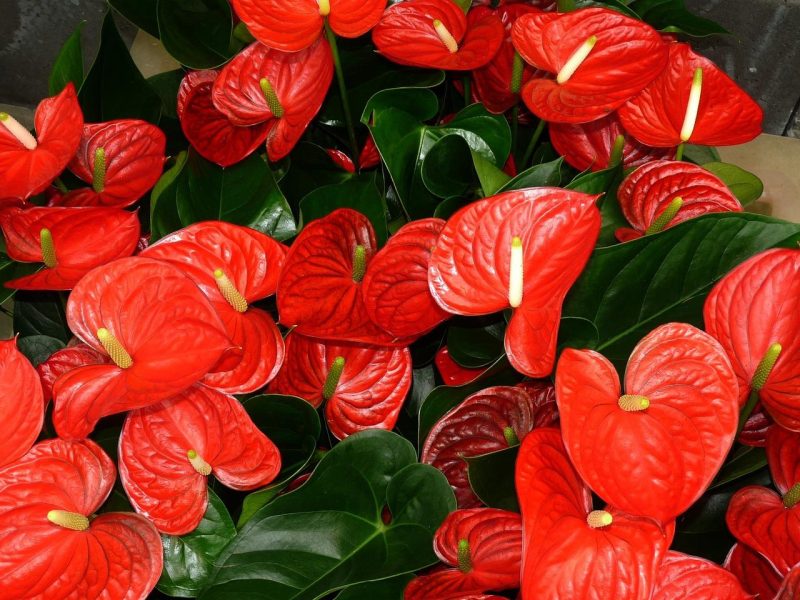
Anthurium, with its glossy, heart-shaped leaves and radiant flowers often resembling shiny hearts, makes for an elegant addition to any collection. These tropical plants are known for their long-lasting blooms and ease of care. They thrive best in bright, indirect light and prefer a humid environment. Regular misting and maintaining adequate soil moisture can keep these vibrant plants happy.
Zebra Plant (Aphelandra)

With its striking yellow and green striped leaves, the zebra plant (Aphelandra) is a showstopper in tropical greenhouses. This plant appreciates warm temperatures and high humidity. Regular watering is essential for maintaining its vibrant foliage and ensuring its characteristic blooms, which emerge as unique yellow spikes. Ensure you provide a rich, well-draining potting mix to keep your zebra plant thriving.
Coral Berry (Ardisia)

Coral berry (Ardisia) is known for its glossy leaves and charming clusters of bright red berries. This evergreen shrub can thrive in the controlled environment of a greenhouse, where it enjoys filtered light and consistent moisture. As a shade-loving plant, coral berry fits well within the undergrowth of a tropical greenhouse, creating a lovely contrast with brighter, flowering plants. Regular pruning ensures a neat appearance and encourages bushy growth. Additionally, the berries can attract birds, adding a touch of wildlife to your greenhouse.
Dutchman’s Pipe (Aristolochia)

The Dutchman’s pipe, or Aristolochia, is an intriguing vine known for both its unique-shaped flowers and foliage. This plant produces pipe-shaped blooms that come in various colors, typically brown or maroon with intriguing patterns. It thrives in warm, humid environments with partial to full shade. The Dutchman’s pipe is also notable for attracting specific pollinators like butterflies, making it a wonderful addition to a biodiverse greenhouse ecosystem.
Blood Flower (Asclepias)
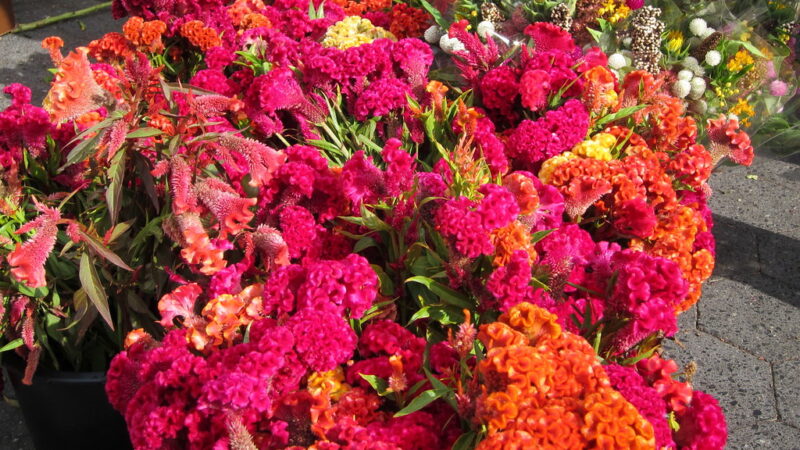
Asclepias, commonly referred to as the blood flower, produces striking, vibrant flower clusters that attract butterflies, particularly monarchs. These plants thrive in well-drained soil and require full sun to perform their best, making them a great candidate for a greenhouse setting. Additionally, blood flowers are drought-tolerant once established, which can lessen the maintenance effort while still providing beautiful blooms.
Banksia
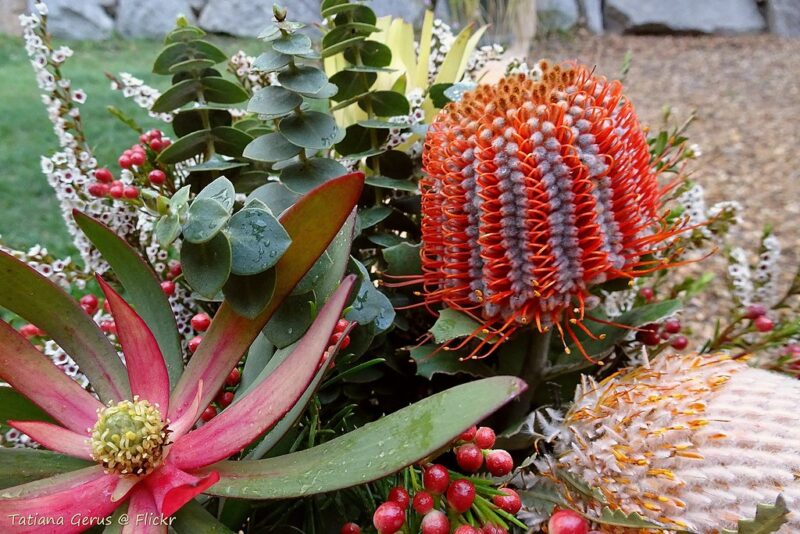
Native to Australia, Banksia is a unique genus characterized by its distinctive flower spikes and leathery foliage. These plants are excellent for warm, sunny greenhouses with well-drained soil. Banksias are not only visually appealing because of their unusual flowers but also attract a variety of pollinators. With varying sizes and forms, they can be chosen based on the space available in your greenhouse.
Pony Tail (Beaucarnea)
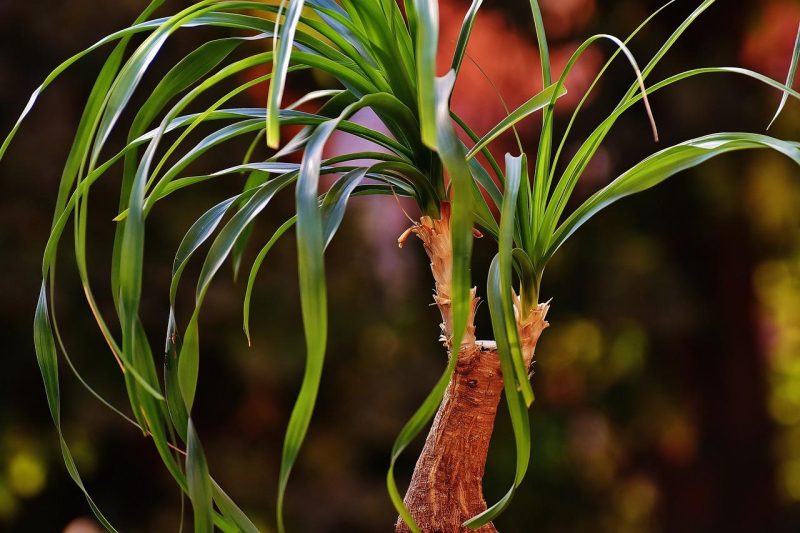
The ponytail plant, or Beaucarnea recurvata, is famed for its swollen trunk and long, arching leaves that resemble ponytails. This striking tropical plant thrives in bright, indirect sunlight and is drought-tolerant due to its water-storing capacity in its bulbous base. It requires minimal care, making it perfect for those who may not always have time to fuss over their plants. The ponytail can be an eye-catching centerpiece in any greenhouse.
Begonia

Beggars, with their vast variety of colors, shapes, and sizes, offer incredible versatility for greenhouse enthusiasts. They love humidity and flourish in shaded areas, making them well-suited to tropical environments. With options such as tuberous, cane, and rhizomatous begonias, there’s a begonia for every greenhouse scenario. Consistent moisture and indirect light create the ideal conditions for these beauties to thrive.
Shrimp Plant (Beloperone)

The shrimp plant, or Beloperone guttata, features shrimp-like flowers that bloom in clusters, offering a fun and tropical aesthetic. This plant does well in a greenhouse setting, enjoying bright light and consistent moisture without becoming waterlogged. The colorful flowers can add a vibrant touch to your plant collection, and the easy care makes it suitable for beginners.
Paper Flower (Bougainvillea)
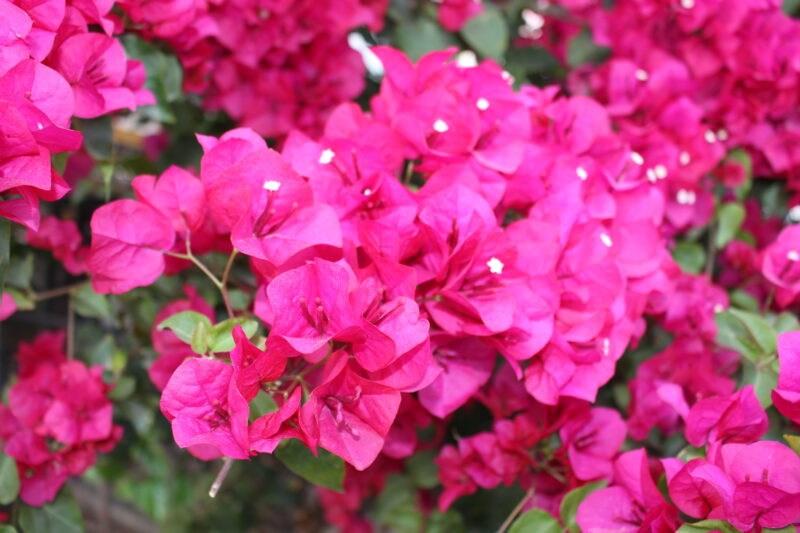
Bougainvillea is a vibrant, thorny vine that thrives in bright sunlight, producing stunning bracts that mimic flowers in shades of fuchsia, orange, and yellow. This plant prefers well-drained soil, and less frequent watering promotes more vigorous blooming. Its ability to climb and spread makes it ideal for covering trellises or walls in a greenhouse, creating a stunning display of color and texture.
Bouvardia

Bouvardia is a charming tropical plant that produces clusters of tubular flowers in bright colors. They thrive in warm conditions with plenty of light and love well-drained soil. Regular watering keeps the soil moist, but be careful to avoid waterlogging. Bouvardia is not only beautiful but also attracts pollinators, enhancing the greenhouse’s ecosystem.
Snow Bush (Breynia)

The snow bush (Breynia nivosa) is characterized by its striking variegated leaves, with creamy white or yellow foliage that sets it apart in any collection. This plant prefers a semi-shaded environment and thrives in humid conditions. Snow bushes require regular watering and well-drained soils. They’re often used as a foliage accent in tropical arrangements, offering a unique contrast to more vibrant flowering plants.
Bromeliads

Bromeliads are a diverse group of tropical plants known for their rosette form and stunning flowers. They thrive in humid environments and prefer indirect light, making them ideal for a greenhouse setting. With a wide variety of species to choose from, bromeliads can add incredible texture and color, and many have interesting leaf patterns. Their ability to capture water in their leaf bases provides a natural mini-ecosystem, often attracting small frogs and insects.
Sapphire Flower (Browallia)

The sapphire flower (Browallia speciosa) is noted for its delicate purple or blue flowers, which bloom profusely under the right conditions. This plant loves bright, indirect light and moist, well-drained soil. Browallia can add a splash of color to shaded areas of your greenhouse while attracting bees and butterflies. Regular pinching encourages bushier growth and extends the blooming period.
Brunfelsia

Brunfelsia, often referred to as the “yesterday-today-and-tomorrow” plant, is notable for its intriguing color-changing flowers. The blooms begin as a deep purple and gradually fade to white over a few days, creating a stunning visual display that changes daily. This tropical shrub prefers bright, indirect light and well-drained soil with consistent moisture. Regular pruning can keep the plant compact and promote robust blooming. This unique flowering process makes Brunfelsia a conversation piece in any greenhouse.
Caesalpinia

Caesalpinia, or cassias, showcases striking feathery foliage along with brightly colored flowers, often in shades of yellow, orange, or red. These tropical plants thrive in full sun, requiring well-draining soil to avoid root rot. Many species of Caesalpinia are drought-tolerant once established, making them suitable for drier climates within the greenhouse context. Their vibrant flowers are not just visually appealing; they also attract a variety of pollinators, adding an ecological component to your greenhouse.
Angel’s Wings (Caladium)

Caladium, commonly known as Angel’s Wings, is celebrated for its spectacular foliage that features heart-shaped leaves adorned with vibrant shades of green, white, pink, and red. These shade-loving plants thrive in the humid conditions typically found in greenhouses. They prefer well-drained, organic soil and should be watered regularly to keep the soil moist but not soggy. With their striking leaves, Caladiums can serve as dramatic accents or borders in your indoor tropical landscape.
Slipper Flower (Calceolaria)

The slipper flower, or Calceolaria, features uniquely shaped blooms that resemble tiny slippers or pouches, making it a whimsical addition to any greenhouse. These plants prefer cooler temperatures and high humidity, thriving best in partial shade. They need well-drained soil and benefit from regular watering during their growing season. Their cheerful yellow, orange, or red blooms are sure to bring an enchanting touch to your greenhouse environment.
Bottlebrush Plant (Callistemon)

The bottlebrush plant, scientifically known as Callistemon, is named for its distinctive, brush-like flower spikes that bloom in vibrant reds and pinks. These hardy shrubs appreciate full sun and well-draining soil, making them perfect for tropical environments. They are known to attract hummingbirds and other pollinators, adding life and movement to your greenhouse. The bottlebrush plant can also be pruned to maintain a desired shape and size.
Camellia

Camellias are revered for their exquisite flowers, ranging from white to deep red, and their evergreen foliage. These plants thrive in well-drained, acidic soil and prefer partial shade, making them ideal for greenhouse settings where bright but indirect light is available. Regular watering keeps them healthy, particularly during blooming season. Their elegance can evoke a sense of tranquility and beauty in your plant collection.
Bellflower (Campanula)
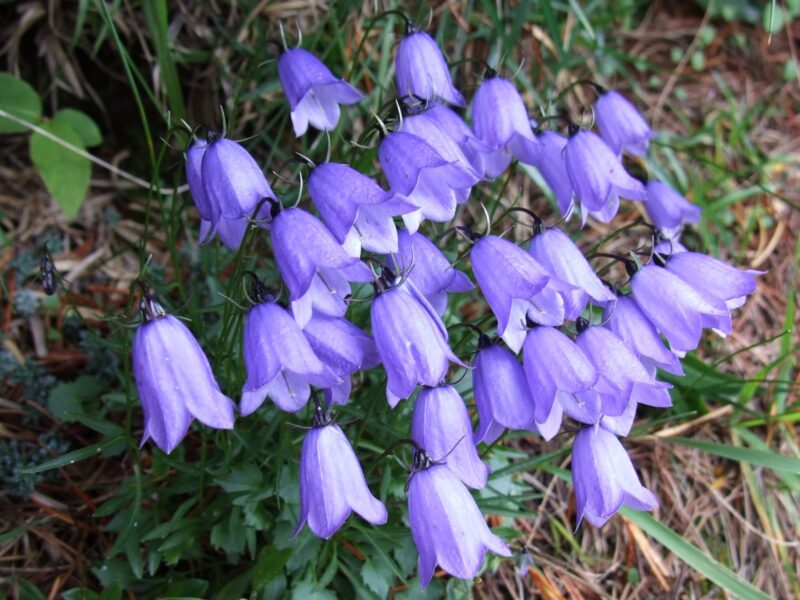
Bellflowers, known for their bell-shaped blooms in hues of blue, purple, and white, can add a charming touch to your greenhouse. Most varieties prefer well-drained soil and moderate watering, thriving in both full sun and partial shade. These perennial favorites can reappear year after year, providing seasonal interest and attracting pollinators. Their graceful appearance makes them suitable for hanging baskets or as part of a container arrangement.
Campsis

Campsis, often called trumpet vine, is a vigorous climbing plant known for its bright orange or red trumpet-shaped flowers. Thriving in full sunlight, this plant can cover trellises or fences, providing a spectacular show during the blooming season. Campsis prefers well-drained soil and moderate watering. Once established, it is fairly drought-tolerant but will benefit from regular watering during dry spells.
Cassia

Cassia plants are characterized by their graceful, cascading branches and bright yellow or orange flowers, making for a stunning display in a greenhouse setting. They thrive in bright light and require well-drained soil. Regular watering stimulates healthy growth, but mature plants can tolerate some drought. Their attractive foliage and vibrant blooms can enhance the overall appeal of your tropical garden.
Cock’s Comb (Celosia)

Celosia, commonly referred to as cock’s comb, is renowned for its unique, crest-like flower heads that can resemble a rooster’s comb. Available in bright colors like pink, red, and yellow, Celosia thrives in sunny conditions with well-draining soil. Frequent watering promotes vibrant blooms, and these plants are often used as ornamental specimens. The striking texture and color of Cock’s Comb make it a must-have for a tropical greenhouse.
Jessamine (Cestrum)

Cestrum, also known as jessamine, produces small, tubular flowers that are often fragrant, adding an enchanting aroma to your greenhouse. This tropical shrub prefers full sun to partial shade and well-drained soil. Regular watering is essential during the growing season, while occasional pruning helps maintain shape. The fragrant blooms are attractive to pollinators and can elevate the sensory experience of your indoor garden.
Mexican Orange Bloom (Choisya)

The Mexican orange bloom, or Choisya ternata, is a delightful evergreen shrub with aromatic foliage and charming white flowers resembling orange blossoms. This plant thrives in well-drained soil and prefers full sun to partial shade. Regular watering during dry spells ensures healthy growth and abundant blooms. Its fragrant flowers make it a desirable addition to any tropical greenhouse, providing both visual beauty and scent.
Chorizema

Chorizema is an attractive shrub with striking flowers that feature bold pinks and reds. These plants thrive in bright, indirect light, preferring well-drained, sandy soil. Regular watering during the growing season supports healthy blooming. Known for their eye-catching appearance, Chorizema can be an excellent focal point in your greenhouse, adding a splash of vibrant color while attracting bees and other pollinators.
Chrysanthemum

Chrysanthemums, or mums, are popular flowering plants known for their diverse range of shapes, sizes, and colors. They thrive in full sunlight and well-drained soil, making them an ideal choice for greenhouse environments. Regular watering is essential, especially during flowering. These hardy plants can bloom in spectacular displays, often in the fall, but with careful management of light and temperature, they can produce beautiful blooms at various times of the year. Their abundant flowers can add warmth and a welcoming atmosphere to your greenhouse.
Cineraria

Cineraria, with its vibrant daisy-like flowers, is a common choice for tropical gardens and greenhouses. The flowers come in shades of blue, purple, pink, and white, making them versatile for various plantings. They prefer cooler temperatures and bright, indirect sunlight along with well-drained, moistened soil. Cinerarias are typically grown as annuals and can provide stunning seasonal color, especially during the cooler months.
Glory Bower (Clerodendrum)

The Glory Bower plant, or Clerodendrum, boasts beautiful, fragrant flowers that can be red, white, or blue depending on the species. This fast-growing plant thrives in well-draining soil and prefers full sun to partial shade, making it suitable for expansive greenhouse environments. Regular watering keeps the soil evenly moist, ensuring vibrant blooms. The attractive flowers not only serve as a visual feast but also attract hummingbirds and butterflies, contributing to a lively greenhouse atmosphere.
Clianthus

Clianthus, or the kakabeak plant, is notable for its striking, claw-shaped red flowers that resemble a bird’s beak. These spectacular blooms thrive in a bright, warm environment and prefer well-drained soil. Regular watering helps maintain their vigorous growth, while adequate ventilation prevents fungal issues. Clianthus is an eye-catching addition that creates interest and draws attention in any collection of tropical plants.
Kaffir Lily (Clivia)

The Kaffir Lily (Clivia miniata) is cherished for its lush, strap-like leaves and clusters of trumpet-shaped orange or yellow flowers. This resilient plant prefers indirect light and well-drained soil, making it ideal for greenhouse settings with controlled light exposure. Clivia is relatively low-maintenance; it should be watered moderately, allowing the soil to dry slightly between waterings. Its striking appearance makes it a popular choice for tropical gardens, bringing warmth and vibrancy to indoor environments.
Cup and Saucer Vine (Cobaea)

The Cup and Saucer Vine (Cobaea scandens) is a fast-growing climber known for its large cup-shaped flowers that range from violet to white. This vine thrives in full sun and prefers well-drained soil, making it perfect for trellises or garden walls in greenhouses. Regular watering will encourage healthy growth, and the fragrant blossoms will attract butterflies and other pollinators throughout the blooming season.
Coleonema

Coleonema, or the breath of heaven, is a charming shrub with needle-like leaves and clusters of delicate, star-shaped flowers. This plant thrives in sunny conditions and prefers well-drained soil, making it easy to care for in a greenhouse setup. It requires moderate watering, and its fragrant blooms can attract bees and butterflies. Coleonema adds a lovely aromatic element and soft texture to your tropical plant collection.
Coleus
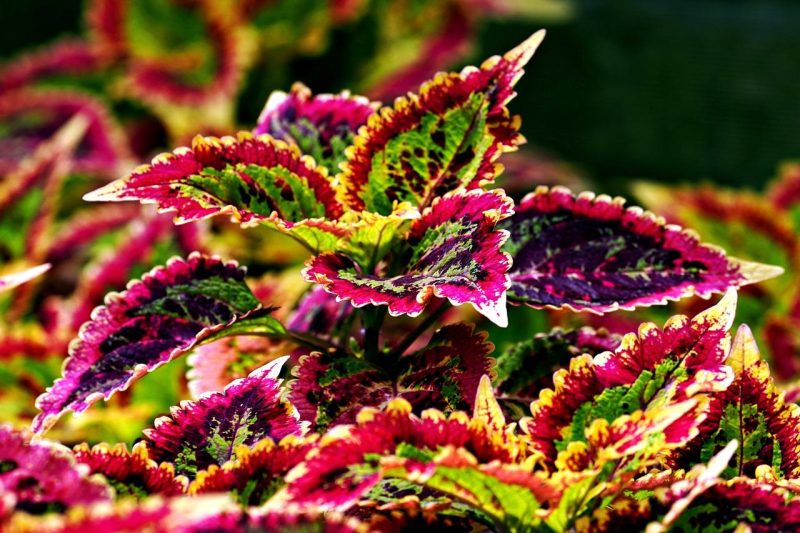
Coleus is celebrated for its stunning foliage, featuring a range of colors and patterns that can brighten any tropical greenhouse. These easy-to-grow plants thrive in bright, indirect light and prefer well-drained soil. They do best when watered regularly to maintain soil moisture without waterlogging. With their diverse varieties and vibrant colors, coleus can be used in containers, window boxes, or as accents in borders, creating a lush and colorful display.
Goldfish Plant (Columnea)

The Goldfish Plant (Columnea gloriosa) is named for its unique, tubular, orange-red flowers resembling goldfish swimming among lush green leaves. This stunning trailing plant does best in bright, indirect light and thrives in well-drained soil that is kept moist. Regular watering is essential, but it’s crucial not to let the plant sit in standing water. This delightful plant can be grown in hanging baskets, allowing its vibrant flowers to cascade freely.
Coronilla

Coronilla is a lesser-known but charming shrub featuring clusters of small, bright yellow flowers that provide a lovely display. This plant is adaptable and does well in full sun to partial shade; it prefers well-drained soil. Regular watering encourages blooming, while pruning can enhance its shape and promote denser foliage. Coronilla is a great addition for introducing an unexpected burst of color to your tropical greenhouse.
Correa

Correa is an evergreen shrub known for its bell-shaped flowers, often in shades of red, pink, or yellow. These plants thrive in well-drained soil and prefer full sun or partial shade, making them easy to incorporate into your greenhouse environment. Correa plants require moderate watering; they benefit from a thorough soak followed by periods of drying out, which mimics their natural habitat. Their attractive flowers are not only beautifully colored but also attract various pollinators, enhancing the biodiversity of your tropical greenhouse.
Spiral Ginger (Costus)

Spiral ginger (Costus spp.) is a striking tropical plant known for its unique spiral arrangement of leaves and vibrant, yellow-to-red flowers. This plant thrives in warm, humid conditions and prefers partial shade to full sun. It appreciates well-draining, rich soil and regular watering to maintain soil moisture. Spiral ginger is perfect for adding height and structure to your greenhouse while also attracting bees and hummingbirds with its delightful blooms.
Firecracker Flower (Crossandra)

Crossandra, commonly known as the firecracker flower, is celebrated for its stunning orange, yellow, or coral flowers that bloom continuously in the right conditions. This tropical plant thrives in bright, indirect sunlight and prefers consistently moist, well-drained soil. Regular watering is essential, especially during its flowering season, and it benefits from humid environments. Crossandra can provide a burst of color and a touch of tropical flair to any greenhouse setting, making it a favorite among flowering houseplants.
False Heather (Cuphea)

False heather (Cuphea spp.) is a compact shrub known for its small, vibrant flowers that can be purple, red, or white, creating a cheerful display. This plant does well in full sun to partial shade and thrives in well-drained soil. It is drought-tolerant once established and requires regular watering to keep blooming consistently. False heather attracts hummingbirds and butterflies, making it a delightful addition to your tropical greenhouse.
Genista (Cytisus)

Genista, often referred to as broom, is a flowering shrub known for its bright yellow blossoms that resemble small pea flowers. These plants prefer sunny locations and well-drained soil, making them an excellent addition to a greenhouse. While they enjoy moderate watering, Genista plants can be somewhat drought-tolerant once established. Their cheerful blooms and fragrant foliage can enhance the tropical atmosphere of your greenhouse, providing a sunny burst of color.





